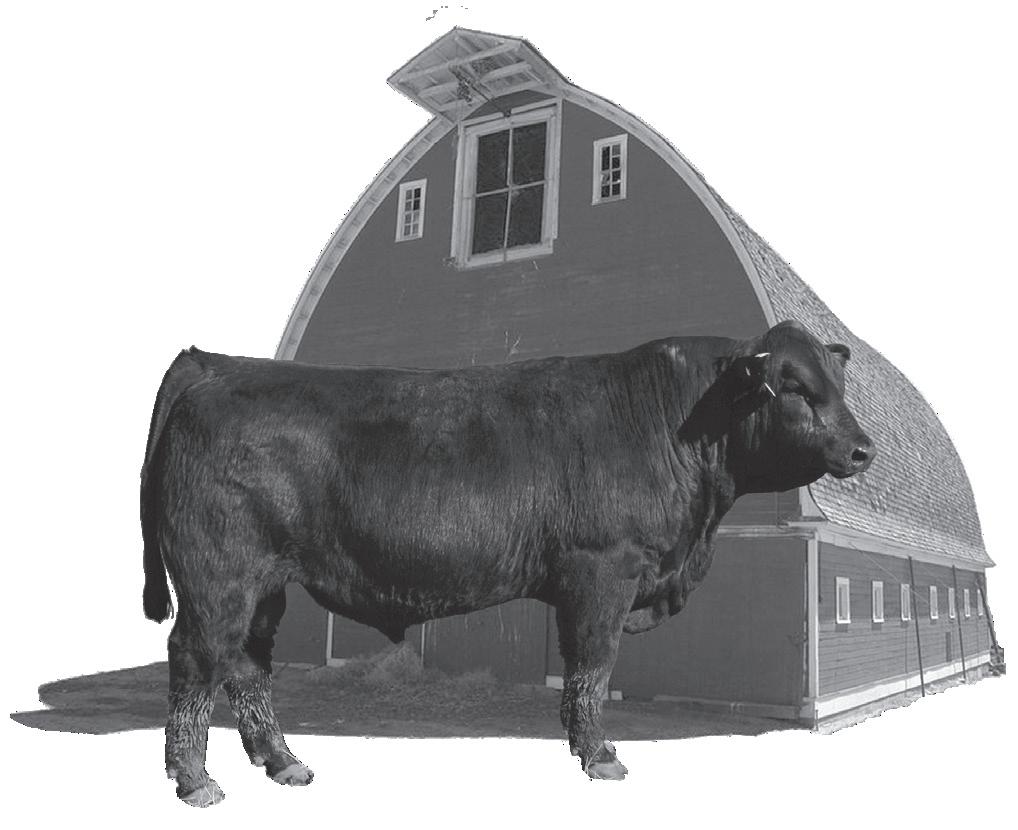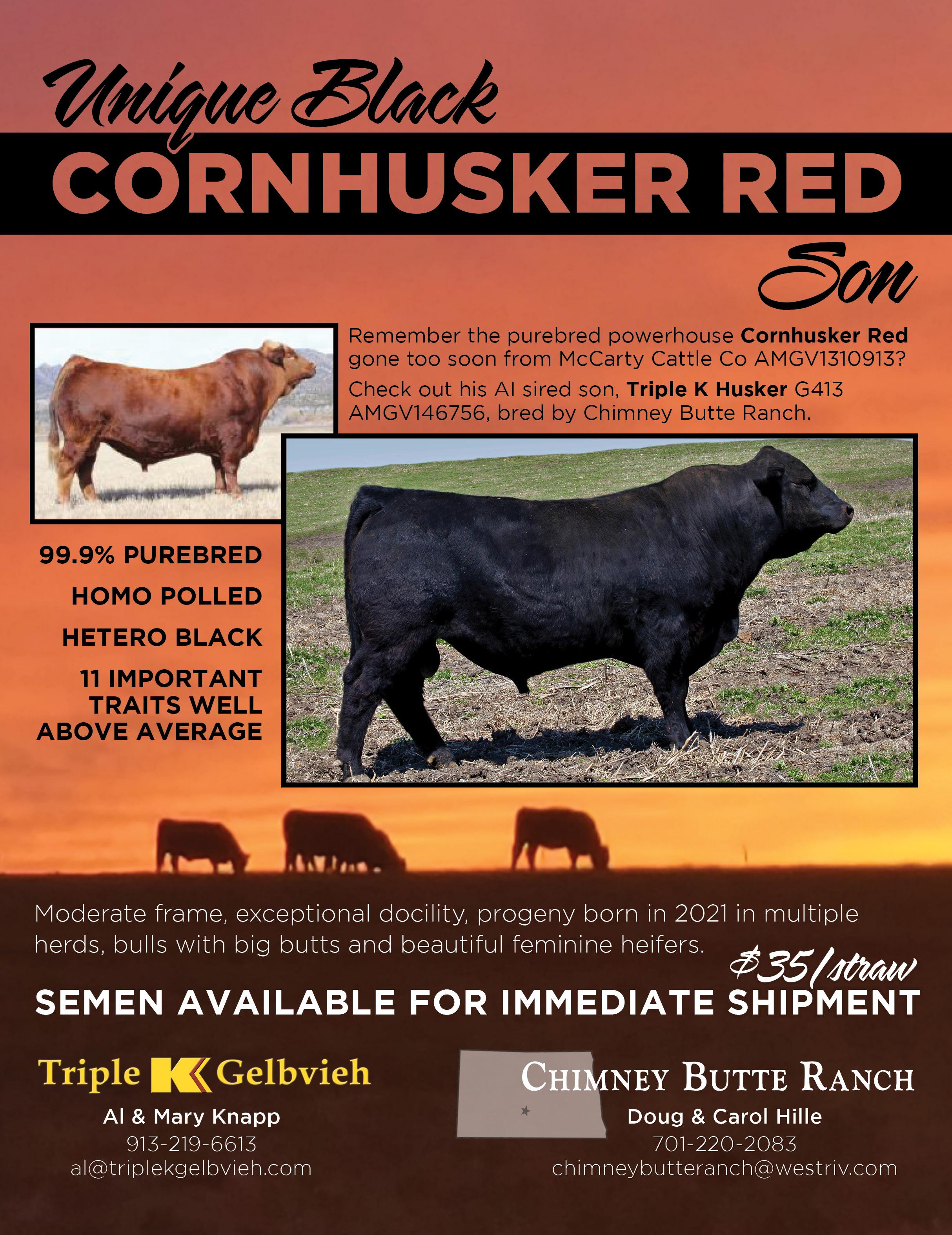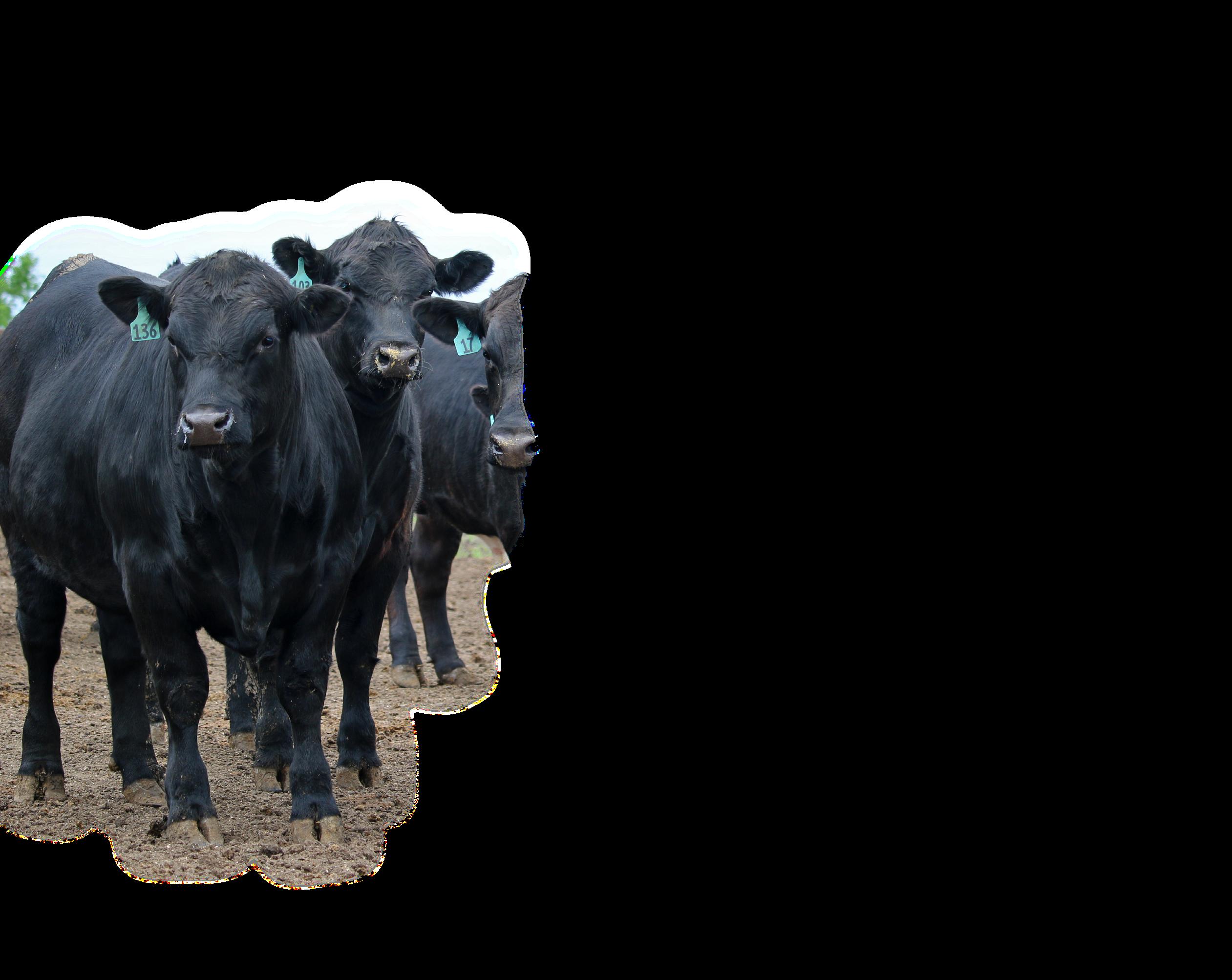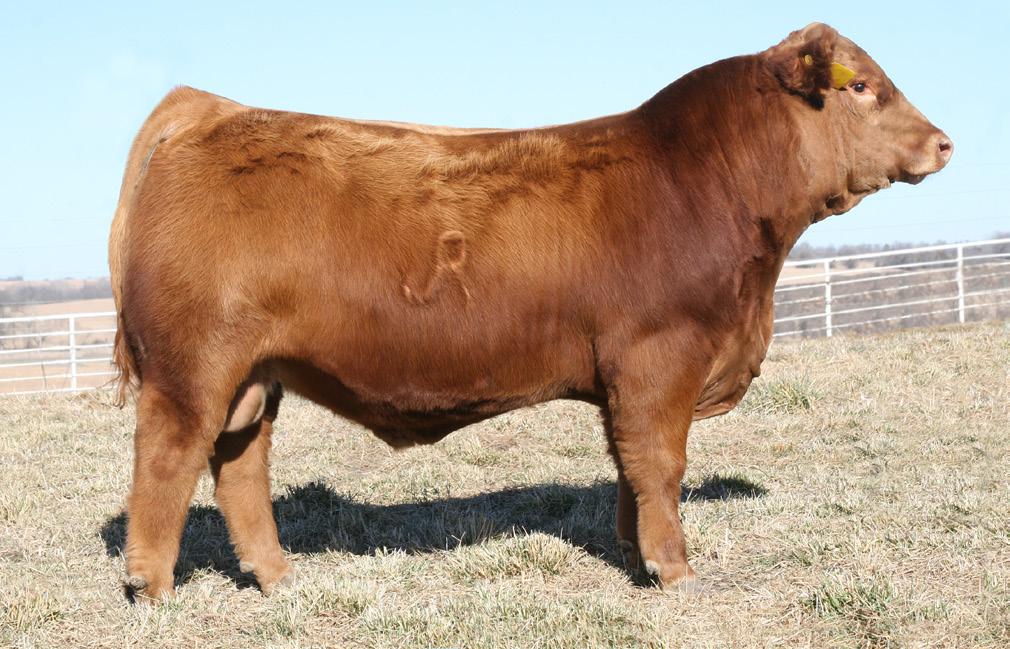
9 minute read
Producer Benefits of Carcass Data Collection
GW GW DATA BULLETIN Producer Benefits of Carcass Data Collection
By Lindsay Upperman
Once an animal reaches the packing plant, some producers tend to lose interest in the beef production system. Yet, what if this were the perfect time to capitalize on information that could greatly influence an operation’s breeding decisions in the next year? Would producers be more willing to follow animals the whole way through the beef production system? Let us find out how carcass data can affect our decisions in the coming year.
Beef Industry Demands
Through the decades, consumer demand has always driven marketing and breeding decisions within the beef industry. In recent decades, heightened demand from consumers for a high-quality beef product has taken precedence. In response to this demand, U.S. industry partners and cattle producers prioritized improved carcass quality, rewarding these carcasses with price premiums through branded beef programs. The development of selection tools such as Expected Progeny Differences (EPDs) has allowed for greater genetic progress on carcass traits. The incorporation of ultrasound records and genomics has increased accuracies on unproven, young sires; however, this is still limited by the number of actual carcass records collected on progeny. For example, the number of marbling score records submitted is only 0.8% of the number of weaning weight records submitted to the AGA, while increasing to 13.9% when compared to the number of ultrasound intramuscular fat records. Ultimately, to increase the rate of genetic progress for carcass traits, more carcass records are necessary.
The Carcass Data Collection Project
With the growing demand for an exceptional beef eating experience, the Carcass Data Collection Project was designed with AGA members and their customers in mind. This breed improvement directive has allowed for crucial genetic information to be collected to expand value of the carcass trait database as well as enhancing the power of current selection tools. Thus, to meet these high-quality demands and participate in the project, certain criteria must be met.
How to Participate: 1. Eligibility a. Verify that calves are sired by registered Gelbvieh or Balancer bulls b. Dams must be identifiable for age and breed composition 2. Pre-harvest Data Collection a. Complete the digital enrollment form and submit with DNA samples b. All calves must have an EID and DNA sampled with a TSU (tissue sampling unit) 3. Harvest Data Collection a. Cattle must not exceed age maturity A at time of harvest b. The participant must have access to the harvest data 4. Next steps… a. Verify cattle meet the minimum requirements b. Contact the AGA office at 303.465.2333 for more info Furthermore, in regard to DNA being sampled with a TSU, the AGA will pay the genotyping costs for the cattle participating in the project, and the genomic analysis will be completed by Neogen GeneSeek.
Benefits for Producers
First and foremost, as a producer participating in this project, you will have access to carcass data from cattle developed from your operation. These results can help assess breeding decisions on the seedstock level and how these decisions translate to results at the commercial sector. In addition to growing the carcass record database, this project will help to make more powerful genetic selection tools through increasing the accuracies of carcass EPDs. Increasing accuracy, especially on the sires utilized within the project, allows a producer to be more confident on decisions made for the next breeding season. Even more importantly, this project will allow for increased predicting power of the genomic panels through the combination of submitting harvest data
along with a DNA sample on the given animal. All in all, more data equals more information which leads to more precise decisions towards your operation’s breeding goals.
Traditional Carcass Data
After the discussion above on the Carcass Data Collection Project and its requirements, there are some of you who know your cattle may not meet those specified conditions. So, can you still collect and submit carcass data that does not meet those requirements?
Of course! Traditional carcass data (such as carcass data collected on animals without a TSU collected) can still be submitted to the AGA and our carcass record database. The first step to any genetic improvement process is the collection of data, and that starts with you! If you have any further questions, feel free to contact me at 303.465.2333 ext: 484 or email me at lindsay@gelbvieh.org. F

GW GW OUT IN THE FIELD Keeping Commodity
Values in the U.S.
By Laura Handke
May is beef month, and for those of us engaged in the beef industry, that means making extra effort to engage and connect with consumers about the importance of the U.S. beef industry. A large part of the U.S. beef story, as it is being written today, is told through the value of exports and direct relationships with other U.S. commodities.
We know that Americans love beef, but so do emerging middle classes in countries around the world, and that demand for red meat proteins also drives other commodity markets. It is easy to overlook the direct commodity price and consumption relationships that exist in the beef value-chain, especially if we are looking through a cow-calf lens. But that doesn’t make those relationships any less real. When we export meat, we are also exporting corn and soybeans, and those meat exports play a significant role in the demand for both of those respective crops. A 2020 annual report released by the United States Meat Export Federation (USMEF) calculates that every pound of U.S. beef exported represents the utilization of about 2.6 pounds of U.S. feedgrains, with beef and pork exports consuming 480 million bushels of corn, 2.12 million tons of soybean meal and 3 million tons of distiller’s dried grains (DDGs). The demand value derived from beef and pork feed consumption of corn totaled $6.26 billion with the livestock industry contributing $2.7 billion to soybean demand. On a per bushel basis, the beef and pork industries contributed 9% of the per bushel price of soybeans and 12% of the per bushel price of corn in 2019.
Former USMEF Executive Committee member and South Dakota grain and cattle farmer, David Fremark, says that meat exports are essential to all of U.S. agriculture.
“People always talk about adding value in agriculture,” he said in a USMEF interview, “Well when you take a raw product like grain and turn it into a protein source that can be shipped all over the world, that product goes overseas but the value stays here at home.
We know that domestic demand for beef, pork and lamb is rather static, but meat demand is booming in other parts of the world. So livestock producers know that if we’re going to increase our profitability we have to expand our presence in global markets. In turn, corn growers know that those livestock producers are leading customers, so that’s why we view meat exports as such an important contributor to our success, as well.”
As producers and members of the beef industry, it’s easy to become laser focused on the work that we do day in and day out. However, this beef month while we are sharing the importance of beef in a heart-healthy diet and the care and dedication we commit to putting those cuts on the dinner plate, let’s take some time to think about how interconnected our agriculture sectors are both here in the U.S. and overseas. F
Bull Barn Genetics
For all your AI needs:
• Gelbvieh
• Angus
• Red Angus
• Simmental
• Club Calf • Salers

• Shorthorn
• Dairy
• Charolais
• Hereford • Sheaths • Gloves • Cito Thaw Units • Tanks • A.I. Kits • Arm Service
Eldon & Kathy Starr 210 Starr Dr • Stapleton, NE 69163 bullbarn@bullbarn.com • 800-535-6173 www.bullbarn.com
DNA Test Herd Sires
Don’t forget to collect a DNA sample on walking sires that don’t already have a minimum of a GGP-LD test result on file with the AGA in order to register progeny. The best time to collect samples is ahead of bull turnout for breeding. The GPP-LD (or GGP-HD) testing must be completed through the Neogen lab in order to meet this requirement.
DNA samples collected with a tissue sampling unit (TSU) are the preferred method of DNA sample collection, per recommendation of Neogen. This preference is due to the sample type’s low failure rate, the speed of which a sample can be collected chute-side and ease and speed of handling at the lab. However, the lab still accepts blood and hair card samples.
To order TSUs, TSU applicators, blood cards, or hair cards, please call the AGA office at 303-465-2333 or email registry@gelbvieh.org
Digital Subscriptions Available
Did you know that the AGA offers digital subscriptions in addition to the hard copy magazine you receive in your mailbox each month? If you would prefer to receive Gelbvieh World or Profit Picture digitally, please contact the AGA office at 303-465-2333 to request the change and ensure we have a valid email address on file for you.
Add Phone and Email Information When Creating New Accounts
Remember to add a phone number or an email address when creating a new account for customers not already in the AGA system. A valid phone number or email will allow us to contact those individuals for address corrections when items are returned as undeliverable.
The AGA prides itself on keeping your customer’s information secure, and their phone number and email will never be shared with a third-party.
Call for Content
On pages 8 and 9 of this issue, Fly Control Management Strategies was offered as an article suggestion by member Gary Felger. We appreciate article and content ideas—if it matters to you, it will likely matter to other AGA members, as well! If you have recently come across interesting information or would like to know more about a topic, please submit your ideas to laura@gelbvieh.org.
New Members
The AGA would like to welcome the following new members to the Gelbvieh Associations in April 2021.
AGA
Diebler Ranch, Mullen, Neb.
Berkland Cattle Farm, Vienna, Ill. 5A Farms, Oronogo, Mo.
SFR Livestock, Nephi, Utah
Brighter Day Farm, Hamlin, W.Va.
JR Farms, Hilham, Tenn.
Cabral Livesock, Grass Valley, Ore.
Nathan and Jessica Goedken, Earlville, Iowa
Sloan farms, Elk City, Okla.
Atkins Gelbvieh, Atkins, Va.
Deibler Gelbvieh Ranch, Mullen, Neb.
Trip E LLC, Humboldt, Iowa
Cagle Gelbvieh Farms, Lead Hill, Ark.
Clover Hill Ranch, Utica, Kan.
M-J Cattle, Indianola, Okla.
Weeks Brothers Cattle Co. LLC., Indianola, Okla.
Warn Farms Land and Cattle, Willow Springs, Mo.
Beamish Cattle Company, Bend, Ore.
AGJA
Justin Luttrell, Liberty, Ken. Jentry Johnson, Maquoketa, Iowa Jensyn Johnson, Maquoketa, Iowa Josie Orf, Stoutsville, Mo. Kannon Jones, Goreville, Ill. Keegan Jones, Goreville, Ill. Emma Forby, Goreville, Ill. Erin Hensley, Granville, Tenn. Spencer Walahoski, Overton, Neb. Lindy Jo Mcclure, Huguton, Kan. Teagan Butterfield, Atkinson, Neb.







